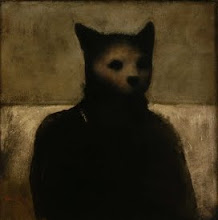 (the energy of uniting opposites?)
(the energy of uniting opposites?)It's my belief that everyone who trains eventually searches for the verification of qi energy.
It may be conscious or not; it may not be why one begins their journey--but it is always encountered along the way.
And the thought never really goes away. Even if you think it has.
Perhaps the reason for this is that anyone who has spent any significant amount of time training has experienced the near-electric feeling of energy being properly focused and used to its full potential (sometimes by ourselves, often at the hand of another). As a friend who studied aikido once told me about his instructor: "I don't know what it is, but for some reason every time my Sensei throws me it hurts like Hell because it's so powerful. It's like getting hit by a truck. But then, for some reason I can't wait to get thrown and feel the energy again."
His teacher was barely five-feet-tall and my friend is about six feet.
And we've all either felt this ourselves or heard stories like it.
Now, Qi shouldn't necessarily be confused with fire shooting from one's fingertips. It is subtle. It's like looking for something that is so hard to find, only to realize that it IS US. We are the eye that, in Zen fashion, can look directly at anything in the world except itself.
Science, especially when it comes to quantum mechanics, could likely make a strong case for qi being a simple alignment of magnetic/electric body systems with non-local results. After all, the body, as with all matter, can theoretically be broken down into more of a frequency than a tangible solid, by these same scientists (and ancient mystics). Or a psychologist may assert that it's all the result of positive thinking and visualization. (This is the argument the skeptics prefer, that it's all in your head--and they wouldn't be entirely wrong. The world exists alone in one's consciousness, really, and the outer is a symptom of the inner.)
Any reasonable student of meditation will tell you that one goal of their art includes mentally breaking down the barriers between the external and the internal. In aikido circles--pun intended--this is the concept of tori and uke becoming as one. When this unity is achieved, the relationship is altered, and the separation of the tori's mind (intent) and the action of the uke is eliminated. And when two opposite forces unite.... well.... it's electric.
In this process, imagination IS the method of accessing qi. And when your mind buys into it, the body--a water-based conductor--aligns with the energetic signals of the brain.
And the Qi was there all along.







